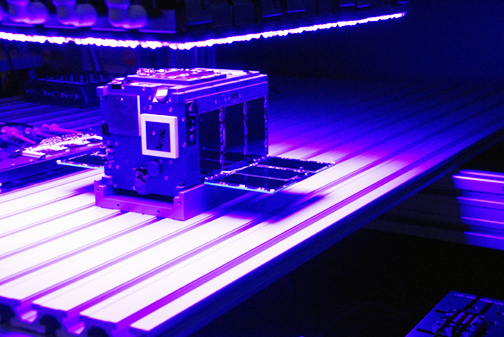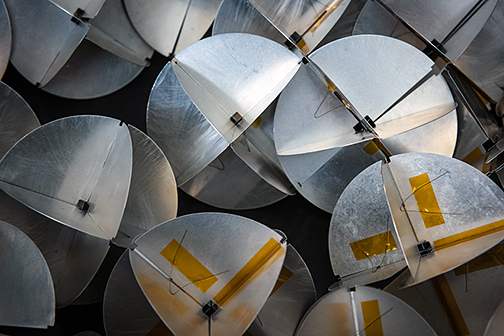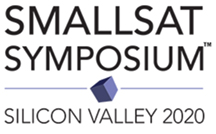
To help accelerate the rapid development of new generations of technology, enhance satellite lifetimes, and better predict satellite reentry times, The Aerospace Corporation (Aerospace) designed AeroCube-10, a dual cubesat mission that deployed into orbit on August 7 from the Cygnus resupply vehicle.

One of the AeroCube-10 cubesats undergoes testing in Aerospace's solar simulator laboratory in El Segundo, Calif. Photo is courtesy of the company.
Most debris models estimate that nearly 1 million debris objects greater than 1 centimeter are in low Earth orbit, of which approximately 30 percent are identified as “lethal debris,” which can damage satellite sensors, erode solar arrays, or possibly puncture a space suit. Improving the space community’s ability to predict a satellite’s mechanical and orbital lifetime, and timing of debris reentry will help maintain a sustainable space environment.
One experiment consists of a dispenser with a set of 28 individually releasable atmospheric probes. These lightweight circular probes, similar in size to CDs, spring open into spherical objects. Due to the probes’ large surface areas being exposed to the atmosphere, they lose altitude quickly and burn up in a matter of weeks. The changes in velocity and altitude due to drag while reentering will be used to measure atmospheric density.

Falling Star payload is an experiment to study the time-varying density of the atmosphere. Photo is courtesy of Jeff Berting, The Aerospace Corp.
Results from tracking the probes’ reentry also enable improved orbital lifetime calculations, satellite formation flying, and predictions for collision avoidance activities.
Other experiments involve payloads on both AeroCube-10 satellites and deal with measuring radiation that could cause degradation of solar cells in space. Each satellite contains a group of space solar cells with varying levels of radiation-shielding thickness. The experiments provide information on how space solar cells degrade due to charged particle radiation in comparison to the degradation predicted by current models.
Each pair of AeroCube-10 1.5-unit cubesats measures 10 x 10 x 15 centimeters, and each unit in the pair has virtually identical shapes and mass (within 2 grams), which prevents the units from drifting apart. This proximity allows them to demonstrate satellite-to-satellite pointing and communication and test a steam propulsion thruster aboard AeroCube-10.
Catherine Venturini, a senior project leader in Aerospace’s Science and Technology Strategy and Development department, said that today's sophisticated computer models are limited in predicting how the atmosphere will behave in the near or long term and do not provide exact timing of debris reentry. The company is using inexpensive cubesats equipped with dosimeters and other unique sensors to conduct experiments that will give The Aerospace Corporation enhanced space situational awareness (SSA).

For all involved in the satellite and space industry and the various market segments that add value to these dynamic environments, the 2020 SmallSat Symposium is truly worth your consideration for attendance.
The SmallSat Symposium is hosted by Satnews Publishers which, since 1983, has been a provider of a satellite news, media and events. This information packed forum was created to enable you and your company to secure a larger portion of market share as well as to take part in the next stages of your company's or organization's growth.

The personal connections at the SmallSat Symposium enable attendees to network with established organizations, subject-matter experts as well as 'New Space' entrants.
The SmallSat Symposium will focus on new technologies and the business environment that is shaping the implementation of smallsat constellations, smallsat launchers, the challenges facing the smallsat developer and actors as well as the enormous benefits of these advanced technologies that will benefit our world.
This event assembles more than 100 diverse speakers, all of whom possess deep industry experience. Additionally, numerous opportunities exist to mingle and network with peers while enjoying exceptional, complimentary meals and refreshment breakfast.

